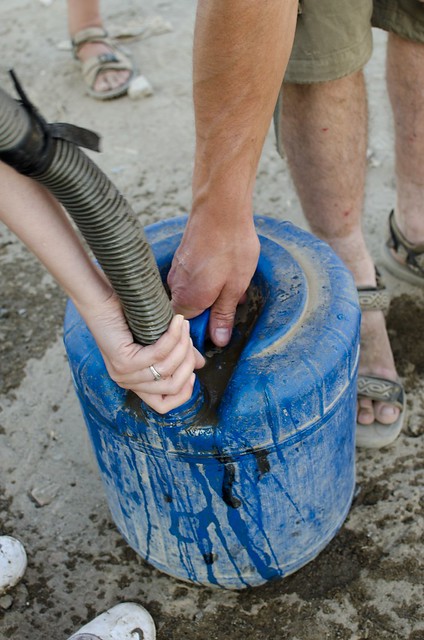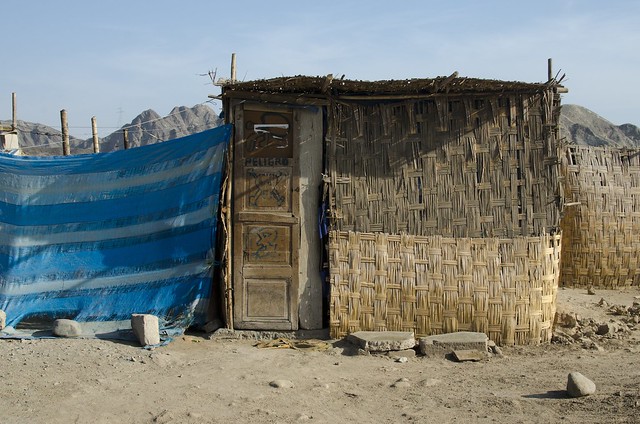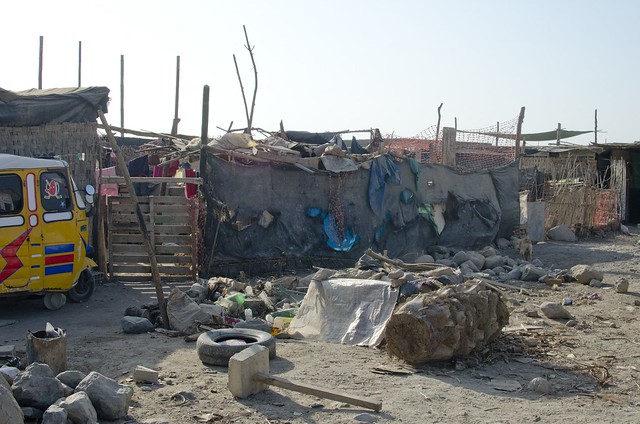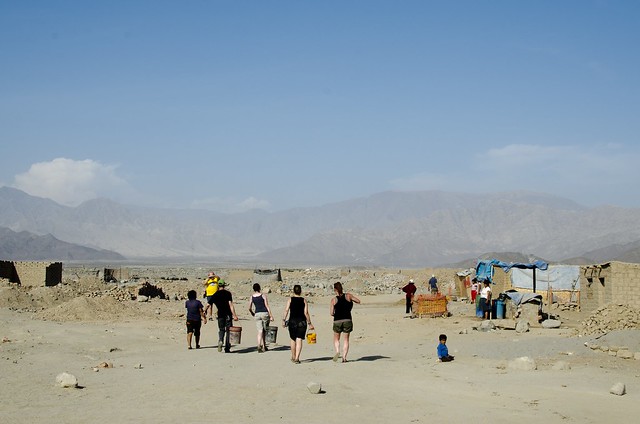This past weekend, I spent some time with a group from England at our home for abandoned boys in Ica. Part of their trip to Ica was not just to spend some time with the staff and boys living at the home, but also to venture out into the surrounding community and share with our neighbors.
The city of Ica is located approximately 5 hours south of Lima, in the Atacama Desert. The Atacama is considered to be the driest desert in the world. There are no flies because there is nothing for them to eat. There are locations where not a single drop of rain has been recorded by humans, and dry river beds that have had no water running through them for 120,000 years. But yet, many cities and shanty-towns have been established here.
Our groups that visit Ica have the opportunity to share water in a shanty town not far outside the city of Ica, just 15 minutes from our home, in the district of La Tinguiña.
The area is characterized by low cost, unstable houses built with plywood, sheets of plastic, cardboard or any available material, but little by little, more homes made of bricks are starting to appear. They tend to be irregular structures good enough to protect from the summer sun. The homes lack clean water, sanitation, and usually electricity. Many are built on land without a permit. There are very few official roads and “house numbers” tend to be more descriptive, rather than an actual number.
I’ve made this trip dozens of times with work teams and groups from my own church. Each time, you meet different people or go a slightly different route, but the need is the same. The people in this area need clean drinking water to live.
Since there were many hands helping carry the full water buckets back to their owners, I took advantage of the opportunity to talk to some of the people that were out in the street, asking about their water needs. Many people in the area use a majority of their income just on water. In Peru, the legal minimum wage is S/. 600 monthly (or $219.62 USD a month), but I suspect that most people in this particular area are earning their income “off the books” and not necessarily earning a full S/. 600.
So how much does water cost? Once a month, the government provides free water to the people in La Tinguiña. If a family of 4 is lucky to have an above ground well or tank, this water will last about a week. The other three weeks out of the month, they have to buy their own water. Water that is being used to bathe, wash, cook and clean.
The large black tank costs about S/. 15, and lasts about a week. ($5.49 USD)
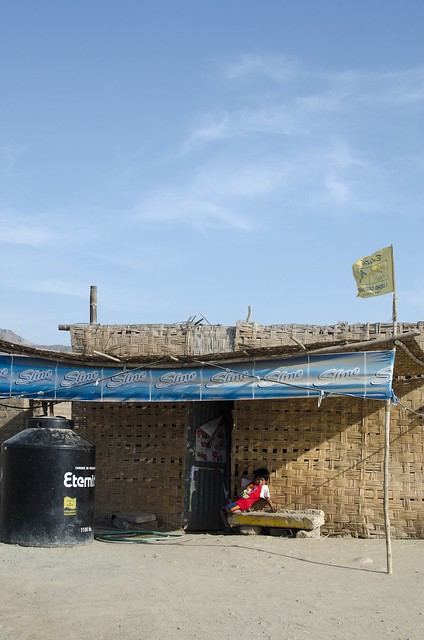
The 55-gallon drum outside of this house costs about S/. 3 to fill ($1.09 USD).
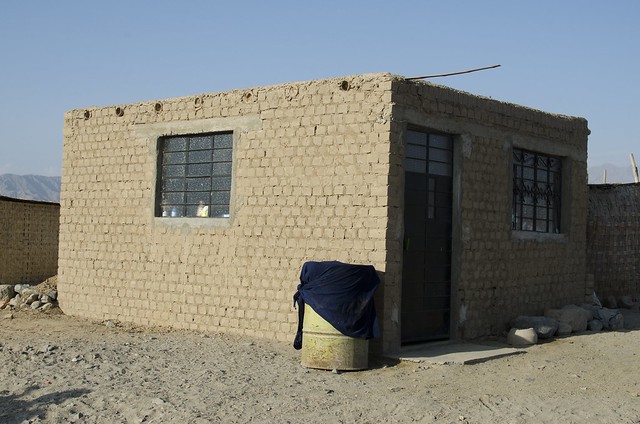
Each of these buckets or tubs cost about .50 centimos to fill (0.18 USD)

To freely provide this basic need to our neighbors in La Tinguiña, we rent a truck and fill it with water. The better part of an afternoon is spent walking through the dusty streets of La Tinguiña calling out “Agua! Agua! Necesitas agua?”
The truck rental, the driver’s time and 7000 liters of water costs S/. 100 ($36.60 USD)
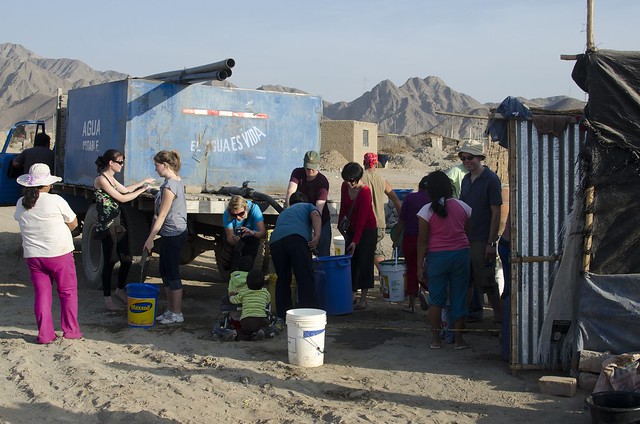
But our work does not end here. While we satisfied the need of physical water, there is still the need for spiritual water. We know that God pours his spirit into us, filling us with the living, eternal water (John 4:13-14). Or, that while the physical water can run out and our tongues are parched, God does not abandon us (Isaiah 41:17). I was encouraged to hear some of the people that received our free water thanking God for the gift, and one even saying that God had answered her prayer. I pray that the others in this area will discover the living water and have the same reaction the next time.
We simply cannot survive on one or the other.

